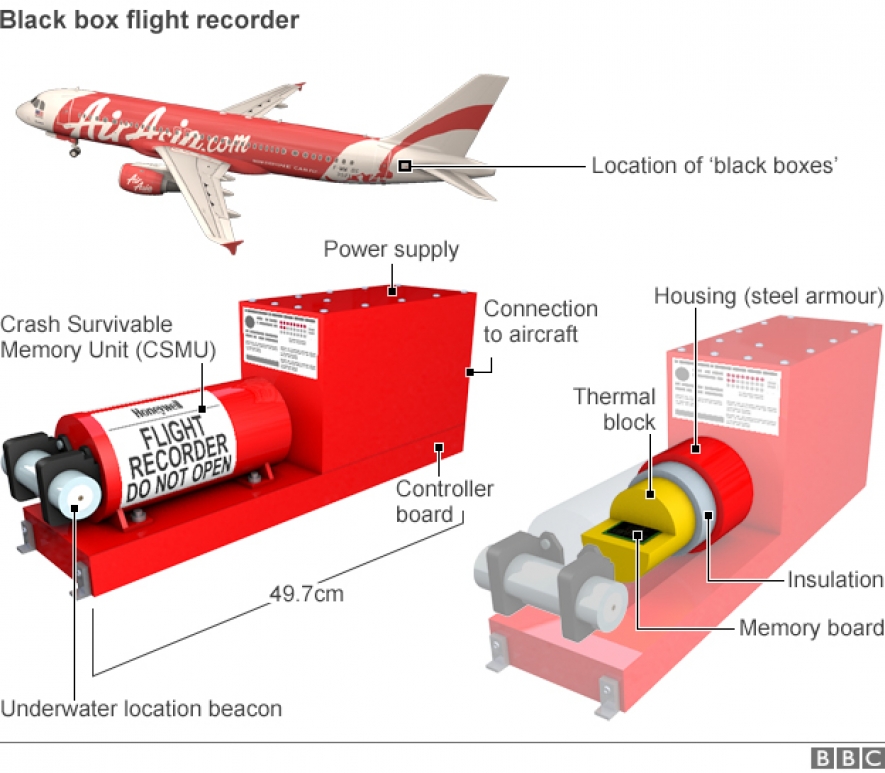Bad weather has hampered the search, keeping divers from looking for the wreck of the Airbus A320-200, which was carrying 162 people when it crashed on Sunday en route from the Indonesian city of Surabaya to Singapore. France's BEA crash investigation agency said late Thursday a ship with two hydrophones, or underwater acoustic detection devices, was due to arrive at the scene early on Friday with French, Singaporean and Indonesian experts aboard.
The Indonesian-led search for the wreck of Flight QZ8501 is centred in the northern Java Sea, close to the Karimata Strait, where search teams have recovered bodies and pieces of the plane. Previous reports of a sonar image showing the plane body in the water have not been confirmed, The Hindustan Times said quoting officials.
Officials earlier said it may take up to a week to find the black boxes, which investigators hope will reveal the sequence of events in the cockpit and in the heavily computerised jet's systems. The BEA team attends the crashes of all Airbus planes.
Even in bad weather, the search for the AirAsia jet is unlikely to be as technologically challenging as the two-year search for an Air France jet that crashed into deep Atlantic waters in 2009 or the so far fruitless search for Malaysian Flight 370 which disappeared last year.
Given Flight QZ8501 crashed in shallow seas, experts say finding the boxes should not be difficult if the beacons, with a range of 2,000 to 3,000 metres (6,560 to 9,800 ft), are working. Tatang Kurniadim, the head of Indonesia's National Committee for Transportation Safety, said late Thursday that rescuers would use five ping locators - two from Indonesia, two from Singapore and one from Britain - once bad weather had eased and the waters had calmed as expected within five days. Investigators are working on a theory that the plane stalled as it climbed steeply to avoid a storm about 40 minutes into the flight. So far, at least 16 bodies have been recovered from waters near the suspected crash site, along with debris such as a suitcase, an emergency slide and a life jacket.
The bodies are being taken in numbered coffins to Surabaya, where relatives of the victims have gathered, for identification. Authorities have been collecting DNA from relatives to help identify the bodies. Most of those on board were Indonesians. No survivors have been found.
Relatives, many of whom collapsed in grief when they saw the first television pictures of the plane debris on Tuesday, held prayers at a crisis centre at Surabaya airport.
The plane was travelling at 32,000 feet (9,753 metres) and had asked to fly at 38,000 feet to avoid bad weather. When air traffic controllers granted permission for a rise to 34,000 feet a few minutes later, they received no response.
- HINDUSTAN TIMES




















